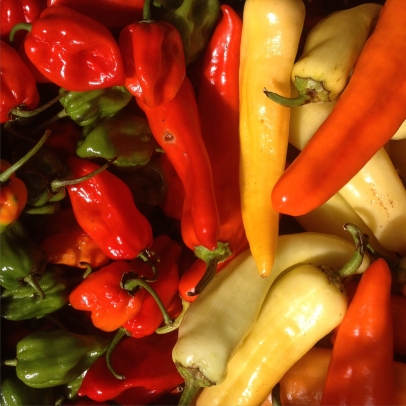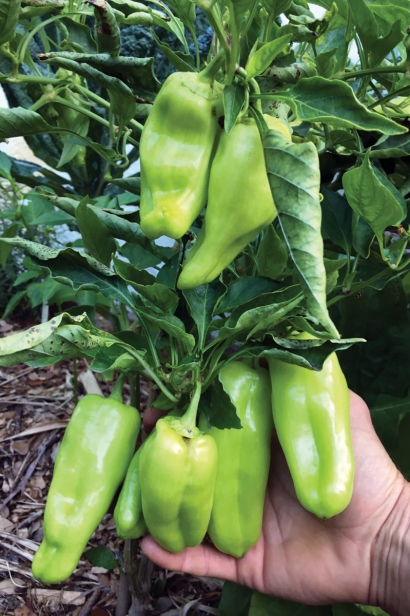Gotta Plant Peppers? Here’s the Plan
If you like spicy food, it’s easy to get carried away with growing peppers – chiliheads are easily motivated by new ways to experience the rush of capsaicin accompanied by variation of flavor, color, shape and size.
Since pepper plants are fragile and slow growing at first, it’s best to start them from seed or cutting in a protected area before transplanting to their final location. Peppers generally do best with at least a half day of direct sunlight in moist soil that is rich and well-draining. While peppers can grow larger when planted in the ground, some gardeners prefer to plant them in pots to reduce the chance of nematodes damaging the roots. Maintain the fertility of the soil by amending throughout the season, but too much nitrogen during flowering and fruiting will reduce yields.
Other pests can be problematic with peppers. Whitefly is very common. Monitor the undersides of leaves for their presence. If you find them, just wipe them off (if there’s just a little bit) or remove afflicted leaves (if most of the leaf is covered). If the majority of the plant is infested, you may need to trim it severely or remove the entire plant to reduce the possibility of the whitefly spreading. Broad mites are also a problem and can cause the shape of leaves to become distorted. When you notice affected areas, prune them off and discard. Organic spraying with insecticidal soap and neem oil can help reduce pests like whitefly and mites.
Peppers can succumb to diseases caused by bacteria and fungus. Don’t overwater plants, especially foliage, and prune lower branches and leaves. Sometime staking can encourage the plant to grow up away from the ground. Similar to tomatoes, smaller peppers are easier to grow than larger peppers, many of which can grow through the whole year. Some of my favorite varieties are:
Aji Dulce/Aji Cachucha (Capsicum chinense) – Perennial sweet peppers popular in Latin America and the Caribbean. Related to habanero and scotch bonnet (all said to have originated in the Brazilian Amazon), but with a mild distinct smoky flavor. Commonly sautéed with onions, garlic, tomato and culantro (aka sofrito) when preparing Cuban-style rice and beans. Plants can be extremely productive and grow to over 4 feet tall with woody stems. Since they grow so large and live long, they’re often best grown separately from annual garden beds.
Cubanelle ‘Biscayne’ (Capiscum annuum) – Also called Italian frying pepper. Mild pepper similar to a banana pepper [3], usually about 6” long, is popular in the Caribbean. Well adapted to South Florida, and a prolific producer.
Datil Pepper (Capsicum chinense) – Very hot with a sweet, fruity flavor, yellow-orange 2-3" long. Datil pepper plants can grow up to 3' tall and live many years. Some say the datil pepper was brought to St. Augustine in the late 18th century by indentured workers from Minorca; others say it was brought from Cuba by a jelly maker around 1880; still others believe it originated in Chile. This is a selection in the Slow Food Ark of Taste, a catalog of culturally significant foods in danger of extinction.
The Datil Pepper Festival, held in St. Augustine at St. Johns County Agricultural Center the first Saturday in October, celebrates their prized pepper with professional and amateur events, including cook-offs and hot sauce competitions. Visit their Facebook page for details.
Hawaiian Chile (Capsicum frutescens) – Small hot (1-2") peppers that can grow to small trees (over 6' tall) and live multiple years. Highly recommended for anyone who wants a large quantity of very hot peppers. Also due to the size of the plant, it is advisable to plant separately from annual vegetable beds.
Padron (Capsicum annuum) – Originating in northwest Spain, Padron peppers taste like Shishitos but are hotter. They are wider with thicker skin and less wrinkled than Shishitos.








